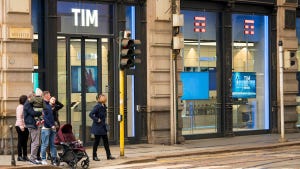Videotron Plants 'Fiber Deep'
Canadian cable operator is rolling out a new architecture that reduces node sizes and boosts capacity

Canadian operator Vidéotron Telecom Ltd. may not be laying fiber all the way to the premises yet, but it's getting closer.
Videotron, which has about 1.65 million subscribers in Quebec, is deploying a "Fiber Deep" architecture from Aurora Networks Inc. that greatly reduces the number of homes hanging off a given node and, therefore, boosts the amount of capacity that can be offered to individual subscribers. Rather than operating between 500 to 1,000 homes per node, Aurora's approach enables MSOs to reduce that to about 125 homes per node.
As an added benefit, the architecture eliminates the amplifiers between the node and the home, so the network becomes more passive, because far fewer "active" elements need to be powered by the network. Aurora's approach is sometimes referred to "N+0" because there are no amplifiers cascading from the node. In comparison, many operators use N+2 or N+3 architectures, says John Dahlquist, Aurora's vice president of marketing.
In addition to slashing power and operational costs, the architecture also results in a ten-fold increase in narrowcast bandwidth per home, according to Aurora estimates. (See Videotron Deploys Aurora.)
To enable this "Fiber Deep" architecture, Aurora supplies the new nodes and "virtual" hubs that combine the broadcast and narrowcast services.
Videotron opted to go with this architecture after vetting other potential "next generation" options. The MSO started the selection process about two years ago.
"The team looked at which network architecture would be cable friendly and optimize the network that was already in place," says Daniel Proulx, Videotron's senior vice president of engineering. The MSO considered a number of options, including fiber-to-the-premises (FTTP), but decided that FTTP did not make business sense for Videotron. Aurora's approach, in addition to meeting Videotron's technical and economic needs, was also ready to roll when Videotron was in the throes of its decision-making.
Videotron is using the new platform to increase bandwidth for narrowcast services, such as video on demand, and to pump up upstream capacity using 64 QAM technology. Although Videotron specializes in voice, video, and data services for consumers, the new approach also pulls fiber closer to businesses, opening up the door to new potential revenue streams, Proulx adds.
Although Videotron has historically split nodes to increase the amount of bandwidth available to a given number of homes passed, it believes the fiber-deep approach will help the MSO achieve its goals in this area as well. Today, Videotron's homes passed per node is "less than 1,000," but the target is to hit a range of 125 to 250 homes per node, depending on the area, Proulx says.
That move should increase the amount of bandwidth available to individual customers and aid the MSO's Wideband strategy. In February, Videotron launched two Wideband tiers to customers in the region of Laval that cap the downstream at 30 Mbit/s and 50 Mbit/s, respectively, coupled with a still-unbonded 1 Mbit/s upstream. (See Videotron Hits the Gas .)
While early Docsis 3.0-based deployments in North American, including Comcast Corp. (Nasdaq: CMCSA, CMCSK)'s rollout in the Twin Cities of Minnesota, are limiting speeds to 50 Mbit/s, operators are expected to pursue speeds in excess of 100 Mbit/s to keep pace with telco offerings.
Although Videotron has announced the deployment of its new architecture, it's not saying how quickly it expects to roll it across its network, so as to keep competitors such as BCE Inc. (Bell Canada) (NYSE/Toronto: BCE) guessing. Videotron launched the project last fall, but "we will move as fast as required by the market," Proulx explains.
Videotron is also not saying how much it's spending on its fiber deep strategy, but Aurora Networks has stated previously that the costs can run 3 percent to 5 percent greater than a traditional HFC upgrade. (See Fighting FiOS With Fiber.)
"It can sometimes be 3 percent the other way, too," particularly in new, "greenfield" situations, Dahlquist says. "In a major rebuild situation, it's almost always going to be a wash."
Depending on the operator and their upgrade cycles, some are looking at Fiber Deep as a step toward FTTP and PON-based solutions, Dahlquist notes.
And Videotron isn't the only MSO giving fiber-deep architectures some attention. Others that are using it to some degree include Rogers Communications Inc. (NYSE: RG; Toronto: RCI) of Canada, Bresnan Communications LLC , CableOne , and Suddenlink Communications .
— Jeff Baumgartner, Site Editor, Cable Digital News
About the Author(s)
You May Also Like












